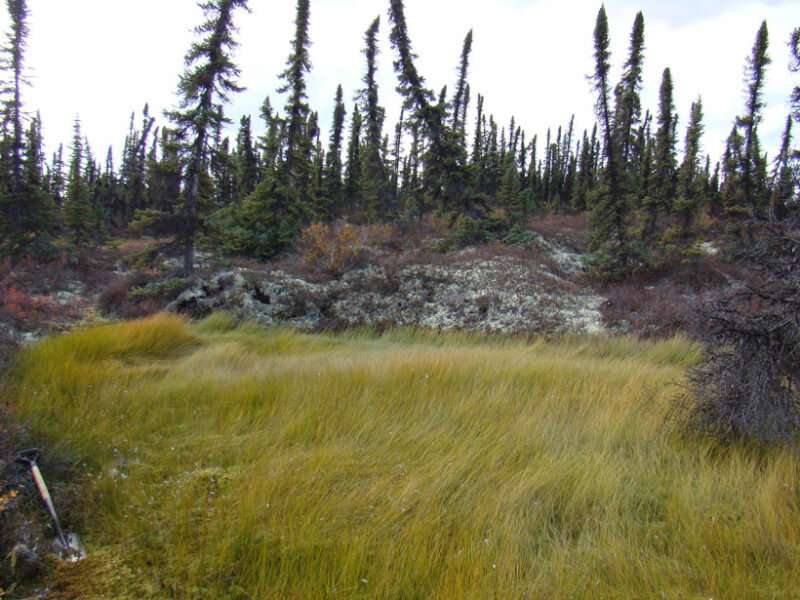Permafrost thaw in Alaska, above, results in ground subsidence and inundation that kills black spruce and other understory plants living on the permafrost plateau. Credit: USGS
Just as your freezer keeps food from going bad, Arctic permafrost protects frozen organic material from decay. As the climate warms, however, previously frozen landscapes such as peatlands are beginning to thaw. But how much fresh carbon will be released into the atmosphere when peat leaves the deep freeze of permafrost?
In a new study, Treat et al. use a process-based model to explore how different factors may affect the carbon balance in peatlands by the end of this century. The scientists simulated more than 8,000 years of peatland history to ensure accuracy, and they examined six peatland sites in Canada to cover a gradient from spottier southern permafrost zones to continuous permafrost sites north of the Arctic tree line.
Their results reveal great variation, depending on each site's history. According to the simulations, some areas will release carbon as permafrost thaws or disappears altogether. Others will accumulate and store carbon at greater rates as vegetation responds to warmer temperatures and longer growing seasons. Overall, little carbon—less than 5%—will escape by 2100 compared with how much will remain stored.
Before peat is preserved stably in permafrost, it spends time in an "active layer," which freezes and thaws seasonally. Unfrozen peat continues to decay, so by the time it is permanently frozen, peat might be highly degraded. When such frozen peat ultimately thaws, limited further decomposition is possible, so the carbon loss is much slower than might be expected. Therefore, most of the carbon that peat will release escapes before it ever enters the permafrost. Accordingly, in simulations of future years, the upper active layer, not deeper or newly thawed peat, continued to release the most carbon.
Previous field studies showed a range of carbon balance outcomes as permafrost thaws, from the release of large amounts of carbon to the storage of additional carbon. This simulation helps explain that variation, linking carbon balance results to specific variables such as site history and active layer depth. Future models could continue to refine the picture by incorporating new variables, such as ice melt and vegetation productivity.
More information: Claire C. Treat et al, Predicted Vulnerability of Carbon in Permafrost Peatlands With Future Climate Change and Permafrost Thaw in Western Canada, Journal of Geophysical Research: Biogeosciences (2021). DOI: 10.1029/2020JG005872
Provided by American Geophysical Union
This story is republished courtesy of Eos, hosted by the American Geophysical Union. Read the original story here.
























